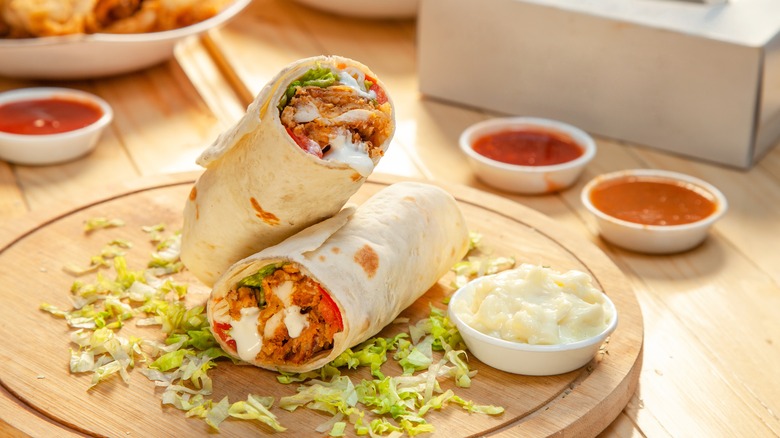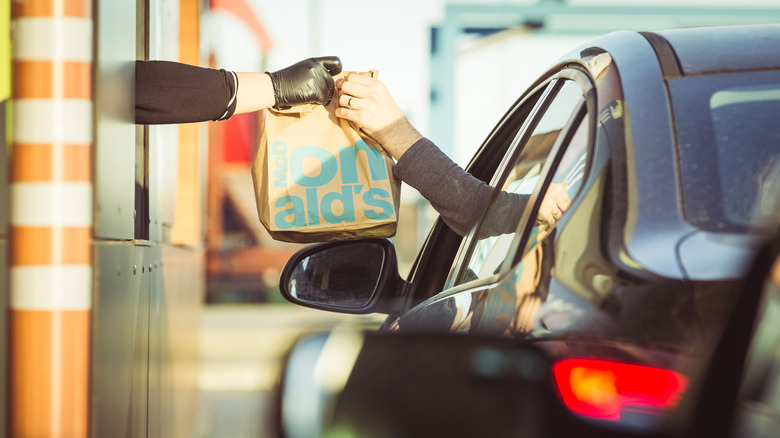Why Fast Food Is Winning Out Over Full-Service Restaurants
If you haven't noticed already, the financial reality in the United States and across the world has been more complicated than usual over the past few years as irregularities created by the COVID-19 pandemic have lingered in the form of inflation and supply chain issues, labor shortages in many states, and skyrocketing food prices that have substantially affected the budgets of many grocery shoppers. These issues have caused many Americans to reevaluate their spending habits, with Slickdeals reporting last spring that 60% of Americans claimed that the first year of the pandemic "permanently" changed their shopping and spending. Shoppers responded that they were spending far less on entertainment, luxury goods, and clothes, for example.
One area in which the Americans surveyed reported spending more money was on takeout food, a trend which has wavered over time but recently reestablished itself. According to a recent report from Placer.ai, diners have been favoring fast food and fast casual restaurants — termed quick service restaurants (QSR) by the dining industry — over full service restaurants since March of this year. This eating out behavior is a further cue to how Americans are trying to save money in trying economic times.
Americans are choosing quick service restaurants over full service eateries
According to a report published by Placer.ai, diners are increasingly "trading down" to lower priced dining options. The site's data shows that since March, foot traffic at quick service restaurants (QSRs) has been higher than at full service restaurants, with consumers trying to spend less in the face of record inflation and ballooning food prices.
In its analysis of Placer.ai's data, Restaurant Dive reported that although gas prices are high, fast food chains with drive-thru windows are still a popular option, with McDonald's and Chipotle both seeing a more than 17% increase in visits during the week of June 6, when average gas prices across the country topped $5. The outlet also noted that while full service restaurants are raising their prices, QSR restaurants are doing the same — so diners might not be saving as much money as they think. McDonald's raised their prices by around 8% year over year and Chipotle raised theirs by about 10%, but both chains have maintained their foot traffic.
Restaurant Dive writes that retaining customers in times of inflationary pressures is of utmost importance to QSRs, with McDonald's, for example, utilizing third-party advisers and consumer surveys to make sure its prices remain competitive with other chains. With inflation not expected to ease anytime soon, the outlet reports, it's likely that GSRs will continue to offer enticing deals — a tactic that's likely to be picked up by full service restaurants, too.

